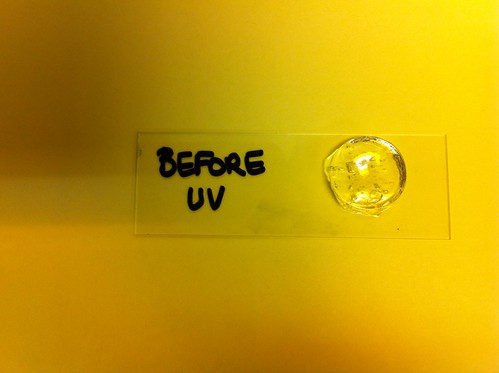by Courtney Fox,
Ph.D., Research Scientist, Carbon3D, Inc.
Polymeric
materials have become an integral part of our lifestyle over the last century.
They're made into an enormous range of products, from simple and inexpensive
injection-molded toys and tchotchkes to super-strong bullet-proof vests and high-performance
water-separation membranes.
Recent
enhancements in both chemical and computational capabilities are giving scientists
the ability to create specially designed polymers aimed at solving a host of
important materials challenges.
One development
that I am particularly excited about is the possibility that a new family of
polymers invented last year by my former colleagues at IBM Research-Almaden may
greatly expand the materials that can be used in 3-D
printing and other additive manufacturing techniques.
Additive
techniques – which are estimated to comprise a $3
billion business today that's growing faster than
20 percent a year – are quite different from traditional “subtractive”
manufacturing methods, which take a block of material and cut, carve, mill or
etch away bits and pieces to form the desired part. In 3-D printing, a part is
instead built up layer-by-layer with precise computer control. Typically, however, the materials must be
able to flow through a small nozzle, yet retain its dimensions until it's
cured, or solidified. This leads to a number of problems, such as a limited
choice of materials and their finished-part properties, dimensional creep,
weakness at the boundaries between layers, and long time it can take to print
larger pieces.
As a result,
people usually use 3-D printing today only for making prototypes, not end-use
mass-manufactured parts. This leads to another criticism: There is significant
waste when the prototypes are discarded.
 |
| IBM organogel |
Many of us in
the industry are hopeful that the new IBM polymers have the potential to
alleviate many of these issues.
The central
theme of the new polymers is the clever combination of a solvent and a monomer
– a chemical structure that can be chained together to make a polymer – to make
a gel that retains its shape. In this condition, the material can be both
self-healing and recyclable.
Applying heat
(or, for some combinations, ultraviolet light) will cause the monomer to join
together, or cure, to form a permanent three-dimensional network of chemically
cross-linked bonds that give the finished material its strength and other
mechanical properties. Different combinations of monomers and solvents can
result in widely diverse materials and properties.
 |
| Dr. Jeannette Garcia in the lab |
Jeannette
Garcia's group at IBM previously demonstrated remarkable self-healing
properties in pre-cured networks based on nitrogen-containing monomers used to
make high-strength thermoset polymers: hemiaminal and hexahydrotriazine. (A thermoset polymer is cured by heating its
monomers.)
Tuning the
uncured combination so it flows more freely when experiencing shear stress
should allow it to flow through tiny 3-D printer nozzles, yet retain its shape
after deposition. It has not yet been demonstrated, but the materials'
self-healing properties combined with a continuous curing process could also
eliminate interlayer weakness in 3-D printed parts.
Our CLIP technology at
Carbon3D takes advantage of the interactions between UV light and oxygen to
rapidly cure photopolymer resins. Our continuous process eliminates the need to
repeatedly coat a layer of UV curable material, creating a layerless polymer
network. Printing using CLIP also lowers the mechanical forces on a 3-D printed
object; traditional 3-D printing techniques like stereolithography or fused
deposition modeling could not accommodate soft materials like those developed
by IBM. We are very excited about the rapidly expanding 3-D printing material
landscape.
Hemiaminal
materials can also be recycled, as treatment with acid allows recovery of the
original starting monomers with sufficient purity to use to make new products.
Combined with their high strength, these materials should enable longer product
lifetimes using fewer raw materials.
I believe the
future is bright for these materials. I look forward to, for instance, someday
using the hemiaminal-UV-curable networks described in the IBM group's Advanced Materials report last month
to print very-high-value membranes for batteries or water-purification directly,
without using harsh solvents that are often required today.
Those are just a
couple of ways that these new materials could increase the beneficial impacts
of 3-D printing.
For three years
while Dr. Fox was pursuing her Ph.D. at Stanford, she worked at IBM Research-Almaden
with Jim Hedrick and Jeannette Garcia as part of the group that created the new
family of recyclable and self-healing polymers. She is the lead author on a
recent Nature
Communications report that describes
how the materials are made and the basis for their remarkable properties. Since
late 2014 she has been working at Carbon3D, Inc., a startup company that is
commercializing its
innovative 3-D printing process that is 25 to
100 times faster than conventional 3-D printing methods.
Labels: 3D printing, Almaden, ibm research, organogel
